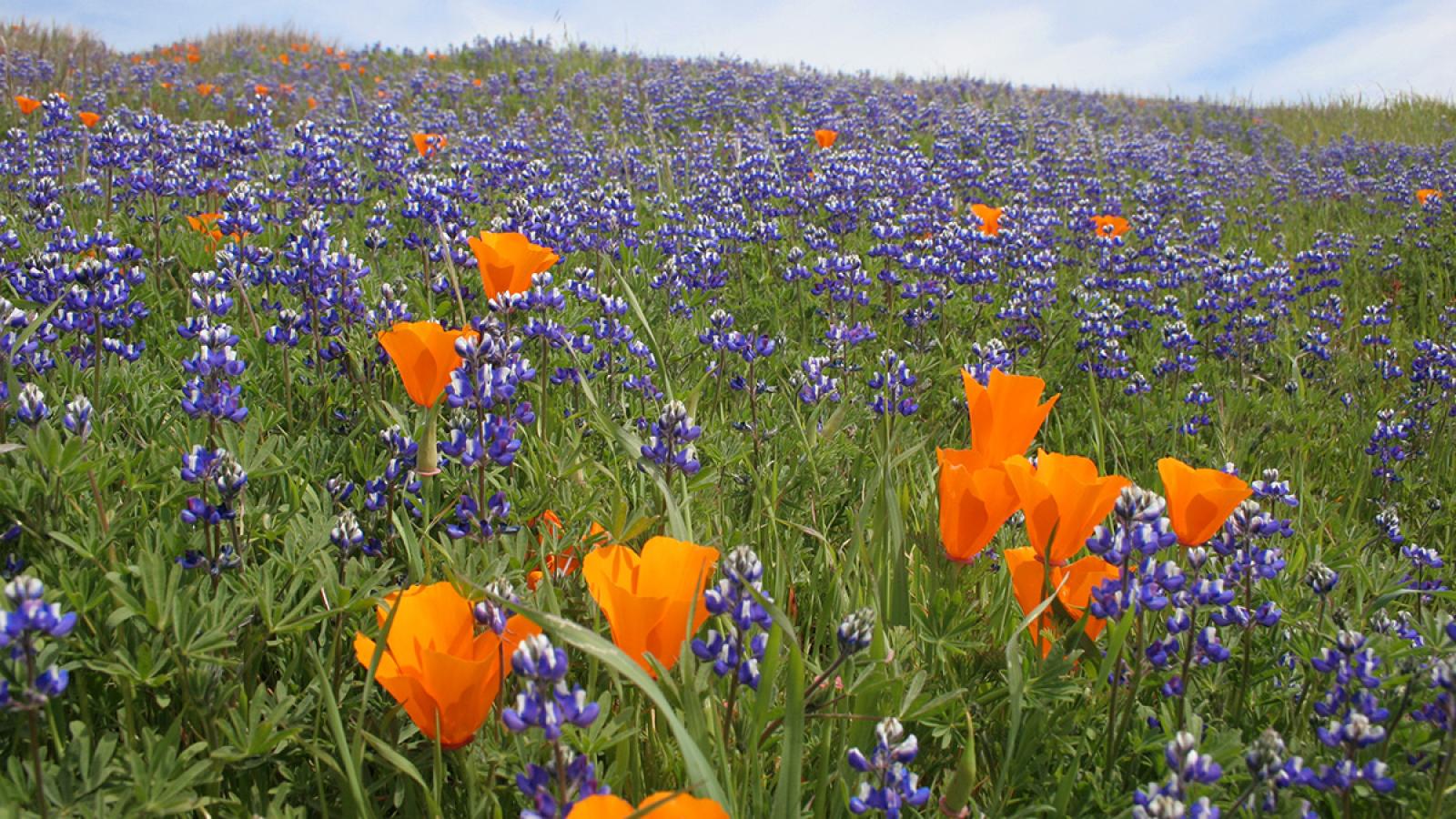Midpen's Work Protecting and Restoring Native Wildflowers
The San Francisco Bay Area is lucky because no matter the season, there are always native wildflowers waiting to be discovered. Spring has the most diversity as winter rains encourage the lifecycles of many short-lived annual species to begin. Last year’s seeds begin a race to sprout, grow, bloom and go to seed before the dry season. Many perennial species also emerge from dormancy in the spring, budding with new growth and flowers.
As part of distinct plant communities – serpentine grasslands, maritime chaparral, riparian woodlands and redwood forests to name a few – seasonal wildflowers create havens of biodiversity that support, and are supported by, a diverse wildlife community including butterflies, bees, birds and mammals.
The life of a wildflower is a tenuous balance. Our warming climate is changing weather patterns, and invasive plants can outcompete native plants for critical life-sustaining resources like sun and water. People, even with the best intentions, also impact fragile habitats.
Nearly 350 species of flowering plants have been identified by volunteers in Midpen’s Sierra Azul Open Space Preserve during our annual wildflower census, which helps record the impacts of climate change on wildflowers and pollinators. Such monitoring programs inform our ongoing land management, and help staff prioritize areas of concern across the more than 70,000 acres of public open space land under Midpen stewardship.
In some areas, wildflowers are blooming more profusely as a direct result of our work. For example, last year’s impressive California poppy bloom along the Rogue Valley Trail in Rancho San Antonio Open Space Preserve was the result of five years of work by Midpen volunteer Abe Oren, who participates in our Advanced Resource Management Stewards Program. Oren has been diligently surveying the area and removing invasive yellow starthistle and Italian thistle so that endemic species like our state flower can proliferate. Community volunteers are integral to Midpen’s restoration work, in part because the ecologically sensitive vegetation management practices we employ often rely on manual techniques, like hand pulling.
The summit of Mount Umunhum in Midpen’s Sierra Azul Open Space Preserve provides an example of how Midpen rehabilitates and protects native plant communities through restoration work. After Midpen recontoured the mountain’s natural peak and returned the original soils that had been removed in the 1950s to build a U.S. Air Force base, our staff worked with volunteers and partners like Grassroots Ecology to carefully install more than 4,300 native plants by hand. Last year, the results of their labor began to bloom. On a single day, volunteers spotted 38 species of slow-growing wildflowers reclaiming their home among the rocky sandstone and serpentine soils of this once barren summit.
Go on a Wildflower Treasure Hunt
Spring wildflowers can be found in every habitat. While enjoying your public open space preserves, take time to observe your surroundings. Some breathtaking species are good at hiding in plain sight.

